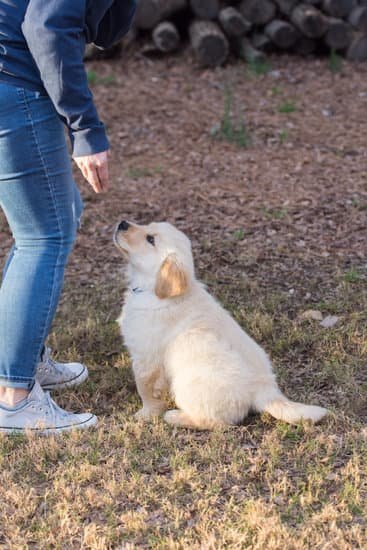Is your dog’s barking turning your peaceful walks into a noisy affair? If so, you’re not alone. Many dog owners struggle with their pet’s excessive barking while out for a walk. In this article, we will explore how to train your dog not to bark while walking. We will delve into the importance of proper training for walking, understanding your dog’s behavior during walks, basic training techniques, and the use of positive reinforcement to discourage barking.
Proper training is essential for a pleasant and enjoyable walking experience with your furry friend. It not only ensures their safety but also contributes to the overall well-being of both you and your dog. Understanding why dogs bark during walks and learning how to address this behavior is crucial in achieving successful training outcomes. We will discuss the basic training techniques that can be used to modify your dog’s behavior and promote positive walking experiences.
Furthermore, we will explore the concept of using positive reinforcement as an effective tool to discourage barking while walking. Teaching your dog proper leash etiquette and desensitization to common walking triggers are also key components in addressing the issue of excessive barking during walks. This article aims to equip you with practical tips on handling dogs who bark at strangers or other dogs, as well as advanced training strategies for long-term success in curbing this behavior.
Understanding Your Dog’s Behavior During Walks
When it comes to walking your dog, it’s important to understand their behavior and why they may bark. Dogs may bark during walks due to a variety of reasons such as excitement, fear, aggression, or overstimulation. Understanding the root cause of your dog’s barking is essential in addressing the issue effectively.
One common reason dogs bark during walks is due to fear or anxiety. This can be triggered by encountering new people, animals, or unfamiliar environments. In these situations, it’s important to remain calm and reassuring to help your dog feel safe and secure.
It’s also crucial to recognize signs of overstimulation in your dog during walks. Overexcitement can lead to excessive barking and pulling on the leash. Taking breaks during the walk and using calming techniques can help in managing this behavior effectively.
It’s vital for dog owners to observe their pet’s behavior closely during walks and identify any potential triggers that may lead to barking. Once these triggers are identified, appropriate training techniques can be implemented to address the behavior and ensure peaceful walks for both the owner and the dog.
| Behavior Type | Techniques |
|---|---|
| Fear/Anxiety | Remain calm, reassuring presence; gradual exposure |
| Overstimulation | Take breaks, use calming techniques |
| Identifying Triggers | Observation, implement training techniques |
Basic Training Techniques for Walking
The foundation of a successful and enjoyable walk with your dog is basic training. This involves teaching your dog how to behave on a leash, follow your cues, and control their impulses. Basic training techniques for walking include teaching your dog to walk beside you without pulling, paying attention to you, and responding to commands such as “sit” or “stay” when necessary.
One effective technique for teaching your dog not to bark while walking is desensitization. This involves exposing your dog to the triggers that typically cause them to bark, such as other dogs or strangers, in a controlled environment. By gradually increasing the exposure to these triggers while rewarding calm behavior, you can help your dog become less reactive and more relaxed during walks.
Positive reinforcement is another valuable tool when it comes to training your dog not to bark while walking. Whenever your dog displays the desired behavior of walking calmly without barking, be sure to reward them with treats, praise, or affection. This will help reinforce the behavior you want and make it more likely to occur in the future.
| Training Technique | Description |
|---|---|
| Desensitization | Gradually expose your dog to trigger situations while rewarding calm behavior. |
| Positive Reinforcement | Reward calm behavior with treats, praise, or affection. |
Use of Positive Reinforcement to Discourage Barking
When it comes to training your dog not to bark while walking, positive reinforcement can be a powerful tool in your arsenal. This method focuses on rewarding good behavior rather than punishing bad behavior, creating a more positive and effective training experience for both you and your furry friend.
Understanding Positive Reinforcement
Positive reinforcement involves rewarding your dog with treats, praise, or toys when they exhibit the desired behavior – in this case, not barking during walks. When your dog refrains from barking in response to a trigger, such as passing another dog or stranger, promptly reward them with a high-value treat and enthusiastic praise. Over time, your dog will learn that staying calm results in positive outcomes.
Consistency Is Key
Consistency is crucial when using positive reinforcement to discourage barking. Make sure everyone who walks your dog uses the same training methods and rewards to avoid confusing your pet. Additionally, be patient and persistent – changing a behavior takes time and repetition. By consistently rewarding your dog for not barking while walking, you’ll gradually reinforce the desired behavior.
Positive reinforcement is a humane and effective approach to training dogs not to bark while walking. By understanding this method and applying it consistently, you can help your furry companion become a well-behaved and enjoyable walking partner.
Teaching Your Dog Proper Leash Etiquette
When it comes to training your dog not to bark while walking, proper leash etiquette is crucial. By teaching your dog how to behave on the leash, you can prevent them from getting overly excited or anxious, which can lead to excessive barking. Here are some basic training techniques for teaching your dog proper leash etiquette:
1. Start with the right equipment: Before you begin training your dog on proper leash etiquette, make sure you have the right equipment. Use a sturdy, comfortable leash and a harness or collar that fits properly.
2. Establish a walking routine: Dogs thrive on routine, so establish a consistent walking schedule. This will help your dog understand when it’s time for a walk and when it’s time to remain calm and quiet.
3. Teach loose leash walking: Use positive reinforcement techniques to teach your dog how to walk politely on a loose leash. Whenever your dog walks without pulling or lunging, reward them with treats and praise. Consistency is key in reinforcing this behavior.
By focusing on teaching your dog proper leash etiquette, you can effectively prevent excessive barking during walks and create an enjoyable experience for both you and your furry friend. Remember that patience and consistency are essential when training your dog, so don’t get discouraged if progress is slow at first. With dedication and positive reinforcement, you can successfully train your dog not to bark while walking.
Desensitization to Common Walking Triggers
When it comes to training your dog not to bark while walking, desensitization to common walking triggers is a crucial step in the process. This technique involves gradually exposing your dog to the stimuli that typically trigger their barking and helping them develop a calmer response. Here are some key points to keep in mind when desensitizing your dog:
- Start with low-intensity exposure: Begin by introducing your dog to the trigger at a distance or intensity level that does not provoke barking. For example, if your dog tends to bark at other dogs during walks, start by exposing them to dogs from a distance where they remain calm.
- Use positive reinforcement: Whenever your dog remains calm in the presence of the trigger, be sure to reward them with treats, praise, or their favorite toy. This positive association helps them learn to associate the trigger with good things.
- Gradually increase exposure: Over time, gradually reduce the distance between your dog and the trigger or increase the intensity of the stimulus. It’s important to progress at a pace that allows your dog to remain calm and relaxed.
Desensitization can be an effective way to help your dog overcome their reactivity and learn to cope with common walking triggers. However, it’s important to approach this process with patience and consistency. Remember that every dog is different, so it may take time for them to become desensitized to certain stimuli. With dedication and proper training, you can help your furry friend enjoy peaceful and pleasant walks without barking.
Tips for Handling Dogs Who Bark at Strangers or Other Dogs
Understanding the Root of the Behavior
One of the first steps in addressing a dog’s barking at strangers or other dogs during walks is to understand the root cause of this behavior. In many cases, dogs bark out of fear, anxiety, or a desire to protect their owner. By observing your dog’s body language and triggers, you can start to identify what may be causing this behavior.
Positive Reinforcement and Redirecting Attention
When your dog starts barking at strangers or other dogs, it’s important to remain calm and avoid reacting with anxiety or frustration. Instead, use positive reinforcement techniques such as treats and verbal praise to redirect your dog’s attention back to you. This helps create a positive association with encountering strangers or other dogs while on walks.
Consulting a Professional Trainer
If your dog’s barking behavior does not improve despite consistent training efforts, it may be beneficial to seek the help of a professional trainer. They can provide personalized guidance and support for addressing this specific issue based on your dog’s unique personality and triggers. Additionally, they can offer expert advice on how to manage these situations during walks while gradually desensitizing your dog to these triggers over time.
Advanced Training Strategies for Long-Term Success
In conclusion, training your dog not to bark while walking is essential for both their behavior and your enjoyment during outings. By understanding your dog’s behavior and using basic training techniques, you can start to address the issue of excessive barking. In addition to positive reinforcement, teaching proper leash etiquette and desensitizing your dog to common triggers can help reduce barking during walks.
For more challenging cases, such as dogs who bark at strangers or other dogs, it’s important to remain patient and consistent in implementing training strategies. Using advanced training techniques, such as counter-conditioning and desensitization, can be effective for long-term success in modifying your dog’s behavior. It’s crucial to seek professional help if needed, as a certified dog trainer can provide personalized guidance based on your dog’s specific needs.
Ultimately, with dedication and the right approach, you can train your dog not to bark while walking. Remember that every dog is unique, so it may take time for them to fully adjust to new behaviors. By staying committed to the training process and being understanding of your pet’s needs, you can enjoy peaceful and enjoyable walks together.
Frequently Asked Questions
Is It OK to Walk My Dog in the Dark?
It is generally okay to walk your dog in the dark, as long as you take precautions to ensure both your safety and the safety of your dog. Use reflective gear or leashes, stay aware of your surroundings, and choose well-lit paths to minimize any potential risks.
Do Dogs Not Like Walking in the Dark?
Dogs do not necessarily dislike walking in the dark, but some may feel more anxious or wary due to limited visibility and unfamiliar sounds. It’s important to make sure they feel secure by using a leash and providing reassurance during the walk.
How Do I Make My Dog Look Good on a Walk?
To make your dog look good on a walk, ensure that they are groomed and clean before heading out. Use a harness or collar that fits properly, and consider adding some accessories like a bandana or bow tie for an extra touch.
Making sure they are well-behaved and obedient during walks can also contribute to their overall appearance while out and about.

Welcome to the blog! I am a professional dog trainer and have been working with dogs for many years. In this blog, I will be discussing various topics related to dog training, including tips, tricks, and advice. I hope you find this information helpful and informative. Thanks for reading!





